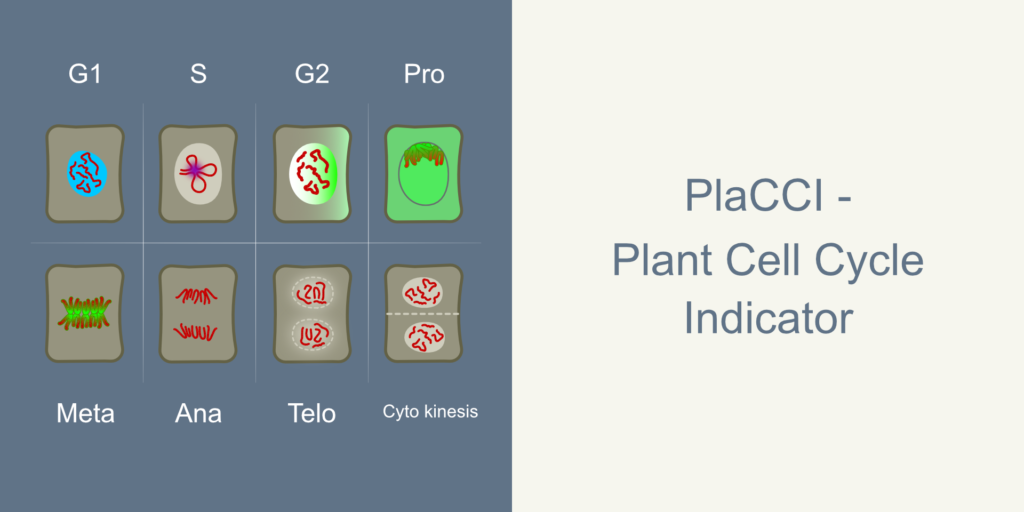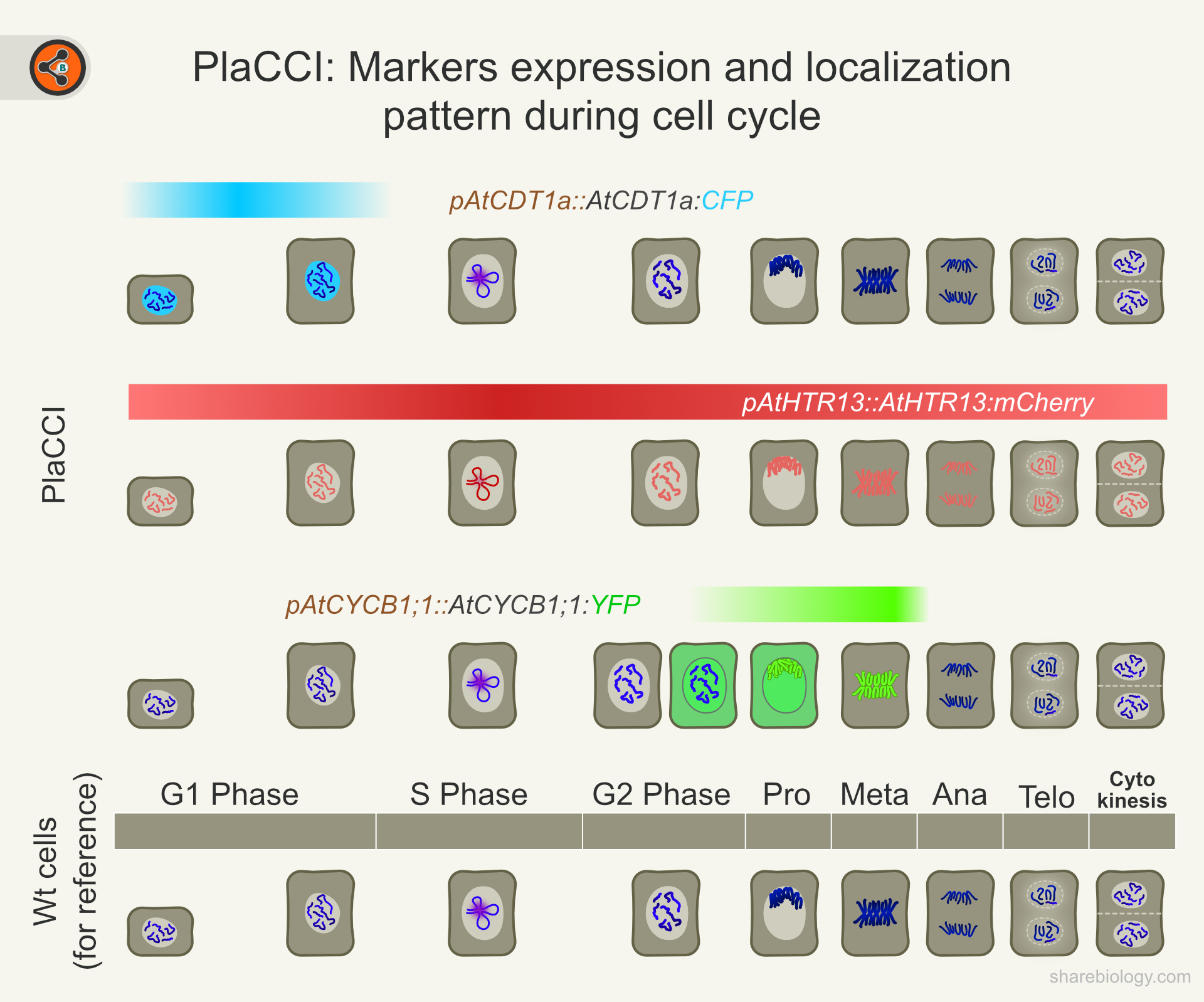PlaCCI (Plant Cell Cycle Indicator)

Introduction
PlaCCI (Plant cell cycle Indicator) is a triple colour marker system similar to the FUCCI system developed for animals. PlaCCI allows the visualization of G1, S, G2 and M Phases, which was not possible with other marker systems before its existence.
Markers (constructs)
The following three constructs were used to make PlaCCI.
- CDT1a-CFP under native promoter. CDT1a is a component of DNA licencing machinery.
- CycB1;1-YFP under the native promoter.
- H3.1-mCherry under the native promoter
Behaviour during cell cycle phases
G1 Phase:
The G1 phase will be marked with CDT1a-CFP accumulation in the nucleus. It gets rapidly degraded during the transition of the G1 to S phase. Also, there will be the presence of H3.1-mCherry in the nucleus. CycB1;1-YFP will not be expressed in this stage. In conclusion, the presence of cyan is an indication of the G1 phase.
S Phase:
There is no dedicated marker. This phase is also marked by increased expression of H3.1-mCherry. The absence of CFP, YFP signal, and absence of condensed chromosomes can also be taken as an indication of the ‘S’ phase.
G2 Phase:
This phase is identified with a YFP signal due to the expression of CycB1;1-YFP. H3.1-mCherry have higher expression levels in the early G2 and basal levels during late G2.
M Phase:
Prophase: Mimics the expression pattern of late G2. It is difficult to distinguish prophase from late G2.
Metaphase: Mimics the expression pattern of late G2. However, this can be distinguished from late G2 and prophases based on the chromatin condensation and metaphase plate.
Anaphase: In this phase, CYCB1;1 degrades completely. Moreover, there is no expression of CDT1a. The presence of the H3.1-mCherry signal marks the anaphase chromosomes.
Telophase: Telophase mimics the expression pattern of anaphase.
Please refer to the following image for the expression and localization of these markers.

Figure 1. Illustration showing PlaCCI (plant cell cycle indicator) markers expression and localization during the cell cycle.
Advantages
- Unlike AtPCNA1, differentiated cells do not express these markers.
- Allows tracking of G1 and G2 phases due to dedicated markers. Identification of Metaphase, anaphase and telophase may not be an issue as the condensed metaphase chromosomes are easily identified with H3.1-mCherry.
- The presence of the construct did not show any detectable difference in the cell cycle pattern or the developmental behaviour in comparison with
- Since all the markers are packed into a single insert, selecting and crossing with the desired mutant lines is easy.
Disadvantages
- There is a time delay between the cell’s entry into G1 and the detectable accumulation of CDT1a. The authors suggested taking the cell size into account to overcome this drawback.
- There is no distinct marker to identify ‘S’ phase progression. There are other dedicated markers to identify the ‘S’ phase.
Expressed in
Immature and mature leaves, petiole, floral meristem, root, trichomes.
References
Desvoyes, Bénédicte, et al. “A comprehensive fluorescent sensor for spatiotemporal cell cycle analysis in Arabidopsis.” Nature Plants 6.11 (2020): 1330-1334.
